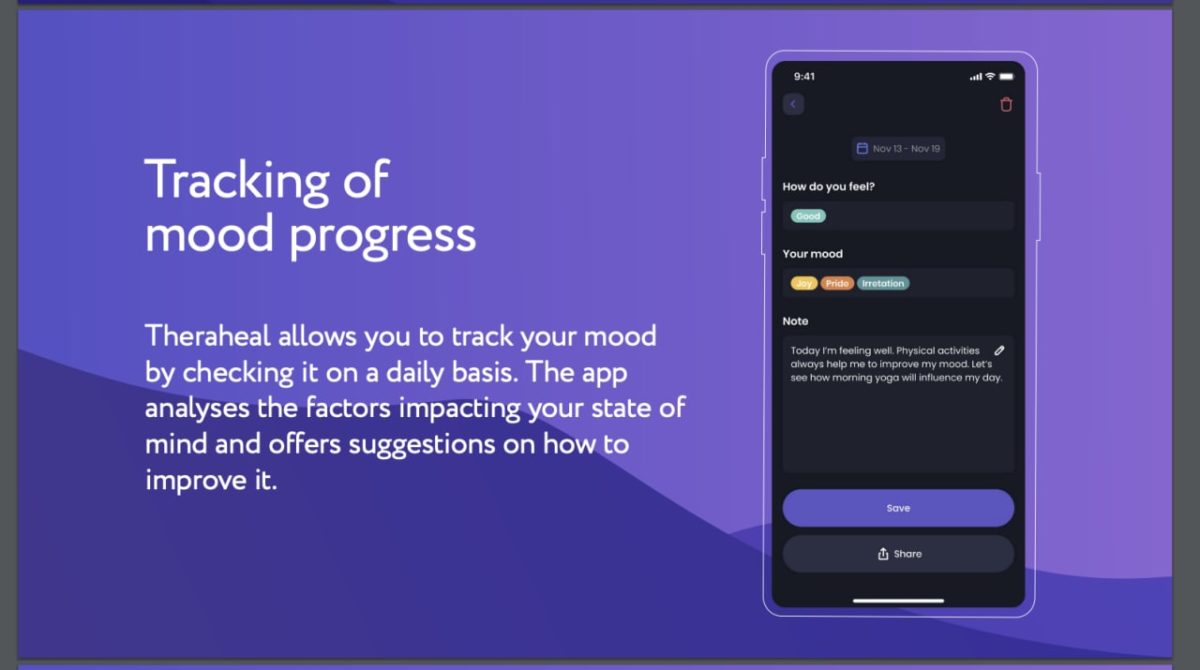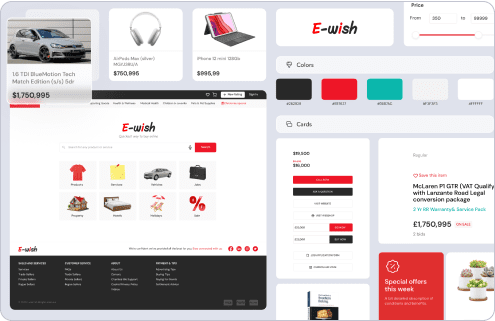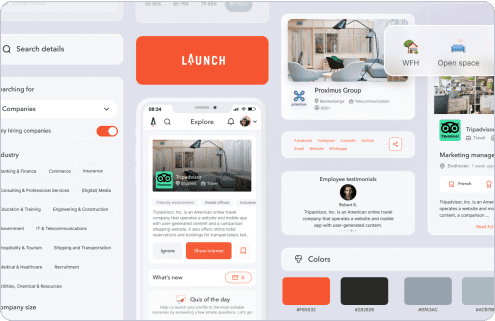Outsource vs. In-house has been one of the most controversial topics of the past two decades. Companies worldwide are using outsourcing business strategies to grow their businesses by reducing operating costs and improving the quality of services.
But while some entrepreneurs praise the benefits of outsourcing, others prefer in-house teams. Such a contrast in entrepreneurs’ experience is confusing and often interferes with making the right decision.
To determine which model is most suitable for your project, we suggest comparing in-house vs. outsourcing models.
What should we discuss?
This article focuses on in-house vs. outsourcing in IT, as this topic is extremely popular in this area. No matter what kind of project you have, you will still go through the same stages.
Therefore, you will have questions about what to choose in similar cases and issues. To make it more straightforward for you what to choose for your project, we have prepared an extensive and detailed comparison of outsourcing it vs. in-house.
We will consider the difference between insource vs. outsource software development at different stages of project development. You will receive valuable information that will help you make the right choice in the future.
RewiSoft Experience


RewiSoft team is experienced and competent in outsourcing. We work on many projects from around the world and market leaders. RewiSoft has already completed more than 130 projects for companies from 45 countries.
Our areas of expertise include product research, mobile app design, UI/UX design, MVP development, custom full-cycle web app development for businesses of any size.
RewiSoft worked on projects in different fields, including SaaS, CRM, Marketplace, FinTech, Healthcare, Real estate, etc.
Launch:
Often, companies come to us with ready-made products but with specific problems such as low conversion, for example, or outdated UX. With our broad experience, we help businesses solve their problems and take their product to the next level.
We recently worked with a Referrizer project that used an in-house team before contacting us.


The company approached us because it faced the following problems working with the in-house team:
- staff turnover;
- incompetence of employees in the region where the company is located;
- low level of design and development;
For our part, we reviewed all the issues of the project and started working on it. The CEO of Referrizer was most interested in making the platform user-friendly, attractive and straightforward.
Unfortunately, their UX hasn’t been updated in a long time, so we had to do our best to change the platform for the better. And thanks to experience, skills and knowledge we managed to do it.
Here’s what the CEO of Referrizer said about our work:


In House vs Outsourcing: Expertise
The IT industry is booming, and that’s a good thing. But not every developer or designer is passionate about perfecting their skills in line with trends. The result is a shortage of talent with a specific set of skills.
Outsourcing, in turn, allows you to hire specialists with the expertise you need in a particular area. By choosing this model, you will have a wider choice. You will be able to choose a suitable team specifically for your project and specialists with the necessary skills that suit your requirements.
In the ratio of expertise, there are places where outsourcing gives up, and there are places where it wins. That is usually due to the presence or absence of a person. For example, expertise in UI / UX design or product development in outsourcing teams will be more powerful because local specialists may be less qualified or too expensive.
You will be able to find a suitable specialist at a reasonable price on outsourcing and start working.
According to Statista, the value of IT services companies delegated to external suppliers may exceed $413.72 billion by the end of 2021. As a result, outsource vs. in-house in terms of expertise wins 1:0.
Outsource vs Inhouse: Management Process
Comparing in-house and outsource models, outsourcing loses a little in terms of management. It is easier and faster to manage in-house teams, as it is always nearby and there are no problems with communication.
In the case of outsourcing, the companies do not have permanent access to the team, so the management in this model causes some difficulties.
However, the world is evolving. There are a lot of tools for remote team management. If you find the right one, the outsourcing team management will be successful. However, at this stage, let’s give one point to the in-house model. So, now we have outsource vs. in-house 1:1.
Cost
One of the main criteria business owners are guided by when choosing to insource vs. outsource software development is the cost. At first glance, it may seem that a staff unit is much cheaper than agency services.
However, if you look at it, it turns out that it is quite the opposite. The monthly salary of a hired specialist + social guarantees + arrangement of the workplace + advanced training = you get a pretty decent amount. Then, involving a contractor, you pay exclusively for the work done.
Outsourcing is much more profitable for most companies. Some companies refuse this or that type of cooperation because of myths that should be debunked for a long time. For example, all external contractors work according to the same template without delving into the individual characteristics of the business.
Perhaps there are still such incompetent organizations, but reputable agencies do not risk their reputation and carry out their work from A to Z. Outsourcing gets one point, and, as a result, we have outsource vs. in-house 2:1.
Hiring Process
One of the biggest pros of choosing to outsource is a quick approach for recruiting high-quality teams. Hiring takes time and consumes the bandwidth of HR departments. A specialist recruiter will enable you to create teams much quicker.
Since recruiting nearshore costs between 30 and 45 percent less than hiring on-shore, you’ll have access to a wider pool of engineers and designers with varied skills and tech stacks.
Hiring in-house teams is a time-consuming process. Finding the appropriate engineers or designers and negotiating with them to join your team takes time. Even then, there’s a chance they won’t be able to join straight immediately.
If the time is ticking on your project, you need the appropriate people immediately, which you may obtain from an outsourced freelancer or specialist vendor. In this aspect, outsourcing takes another point, leaving in-house behind. The results so far are outsource vs. in-house 3:1.
Outsource vs In-house: Cooperation Models
Basically, there are three cooperation models in IT outsourcing: time & material, fixed price, and dedicated team. The fixed price cooperation model requires you to pay a certain amount of money for a specific scope of work. The amount of money is unrelated to how much time and resources an outsourcing agency will devote to completing the job.
Choosing time & material model, only when features are provided or milestones are reached does the client pay the agreed-upon amount. In the dedicated team kind of collaboration model, time and money are allotted for the wages of competent experts as well as the delivery of all necessary tools to the team.
Hiring an in-house team, the model of cooperation in this case is rather simple. You will have to pay the agreed salary to the team members every month. If we compare outsource vs. in-house, then outsourcing is more profitable, as you can see. So, outsource vs. in-house wins another point, and now we have 4:1.
In House vs Outsourcing: Risks
Another great advantage of outsourcing is risk reduction. By choosing this model, you can reduce the likelihood of such risks:
- time risks;
- budgetary risks;
- operational risks;
- technical risks;
- external risks.
A legal contract always regulates outsourcing. It includes not only the scope of work, NDA (non-disclosure agreement) but also some other essential aspects such as payment clause, deadline, performance clause, confidentiality clause, withdrawal clause, and others.
Moreover, outsourcing is not just a transfer of your responsibilities to another company. It is rather cooperation and teamwork. Consequently, both companies, by default, share the benefits and risks associated with this process.
The main risk you face when working with an in-house team is low retention rates. Due to the higher demand and attractive packages offered by other companies, developers and designers are increasingly changing jobs. Thus, there is always a risk that your lead developer or designer might change position at a critical project stage. And again, outsourcing gets the point, and as a result, we have outsource vs. in-house 5:1.
Quality Control
Comparing in-house vs. outsourcing in terms of control, outsourcing loses a little. Perhaps, lack of control and involvement in the project is the most common outsourcing problem.
But this problem can be easily avoided by documenting all your requirements, creating milestones and project charters. This way, you can keep track of your work. If something goes wrong, you can easily understand it.
By hiring an in-house team, you will have more control over all work processes since employees will always be near you and often in one workspace. In this case, it would be fair to give the point to in-house teams. The results are outsource vs. in-house 5:2.
Cultural Fit
Hiring an in-house team means working with people who share the same culture and beliefs. That helps employees integrate effectively into the company, allowing them to add value to their work.
When choosing an outsourcing team for your project, you may face some challenges in terms of cultural alignment. Therefore, to avoid this problem, it is recommended to look for a team in Eastern Europe.
In this case, we will also give a point to in-house teams. However, outsource wins with a margin of two points, with final results outsource vs. in-house 5:3.
Outsourcing and Inhouse Team Practice On Differends Project Stages
We have already covered the main differences between outsourcing it vs. in-house. Now let’s look at the specificity of these two models at different stages of project development.
In House vs Outsourcing: Discovery stage
Outsourcing teams conduct product discoveries cheaper, but it is not a fact that it is better and of better quality than an in-house team. Let’s see why this is so. If you have an in-house business analyst in your company, he is always by your side.
He is fully involved in your project, sees the problem, can attend all meetings and workshops, and analyzes everything quickly and clearly. Such a person may cost you more, but be more helpful and do the job well.
Outsourcing teams will be much cheaper. However, you must remember that to get a good result, you will need to do excellent management. If you have a large and complex project, we recommend that you find great and not cheap outsourcing specialists or hire an in-house, highly specialized employee.
We recommend choosing an outsourcing team for small and medium-sized projects, but do not forget about proper management and control of such a team.
UX/UI Design Stage
In the case of UI/UX design, outsourcing teams win in all aspects. First, the price is lower. Secondly, the quality is not worse than that of in-house teams.
However, here it is worth remembering about the choice of a country for outsourcing. Eastern Europe offers good quality services at a reasonable price, for example.
The downside of UI/UX outsourcing is that it is a little harder for outsourcing teams to conduct research, testing, etc., than for an in-house team. However, once again, good management makes up for it.
To get a good result when working with an outsourcing team, you need to establish frequent communication, clearly state your thoughts and requirements, correctly draw up technical specifications, etc. Having established these processes, you will get the most out of the outsourcing team and achieve your goals.
Insource vs Outsource software development
By choosing outsourcing developers for the software development stage, you will certainly save money, as an excellent onshore developer is very expensive.
The advantage of outsourcing is that you have access to a large pool of talents where you can choose a specialist suitable for your product with a particular set of skills and knowledge.
The disadvantage of outsourcing is that you may not be able to solve any problems in time and check the developer’s work done. However, this is still the same management issue. Establish a good control and management process – then you will get an excellent product on time.
QA Stage
The development phase is not the end of the software development project. Before it can be released, it must go through a series of product testing processes. If you don’t have an experienced in-house software testing team or if your current team is small, outsourcing QA services is much better than establishing your QA team from the start.
The following are the advantages of outsourcing software testing and QA services, as well as how to take advantage of them:
- Access to the best expertise. When you outsource product testing, you will be able to choose the finest personnel from software testing outsourcing firms that specialize in your areas of concern.
- Focused operations. For your in-house employees, software quality assurance may be a tough job. So, by outsourcing software testing, your organization may concentrate on the development process and other key business activities.
- Fresh pair of eyes. An editor must review a writer’s work, no matter how excellent it is. The same may be said of software engineers. Software testing outsourcing agencies will be able to detect vulnerabilities that your company’s employees may have missed.
In House vs Outsourcing: Project Support
At the stage of project support, of course, it is better to have an in-house team since if any problems arise with the product, you need to respond and solve the problem quickly.
Your in-house team will be able to react quickly since it is next to you and your project. The team knows your project from A to Z, and you can quickly make a decision after discussing everything.
However, if communication with the outsourcing team is fine-tuned, you will not have any problems with project support. But the risk is always there.
IT Consulting
If your company needs IT consulting, then we recommend you choose to outsource. Firstly, a large number of experienced and talented consultants are located abroad.
Secondly, it will be cheaper for you to hire outsourcing consultants than to hire an in-house person.
Third, you are unlikely to need a consultant all the time. Basically, consultants are hired when you need help with a specific project or a specific stage of this project.
In-house vs Outsourcing: Project Scaling
Most companies have ambitions to grow and develop. Each step of scaling is a challenge, stress, and risk. At this point, outsourcing comes to the rescue, ready to quickly integrate into business processes and increase productivity or expand the company’s range of capabilities.
In a team, each specialist’s level is important and the extent to which these specialists are ready and able to work together on specific projects. It’s not enough just to recruit tough specialists. You need to make sure that they really can and want to do the job, according to the quality criteria of your company. If a specialist fails, he needs to be changed.
And the more people there are, the more often they change – this implies constant work with personnel. Plus, the increase in the number of people entails communication difficulties. If you do not pay enough attention to this, all processes will begin to sag.
When you take an outsourcing company as a partner, you buy a turnkey team. That means that the customer does not need to build the development process and follow it but only has to give the layouts and technical specifications and get the result at the end.
In-House vs. Outsourcing: Summary
The benefits of working with an offshore team are driving more and more business owners to outsource. By working with offshore developers or designers, you can find long-term players focused on your business’s success.
Hiring an in-house developer might seem like a good idea at first glance, but it does pose some real problems. Finding and recruiting the right people, explaining your needs, and getting the most out of the developer or designer takes a lot of time and effort. That can distract you from core business functions, leading to confusion and loss of the project.
Determining the best perspective is only possible through self-assessment of the situation. Outsourcing takes over most of the planning and execution of some of your workload, thereby freeing up your efforts to focus on the tasks that require your attention.
If you need help with your projects, don’t hesitate to get in touch with us for consultation. We will help you determine which insource vs. outsource software development option suits you best.










